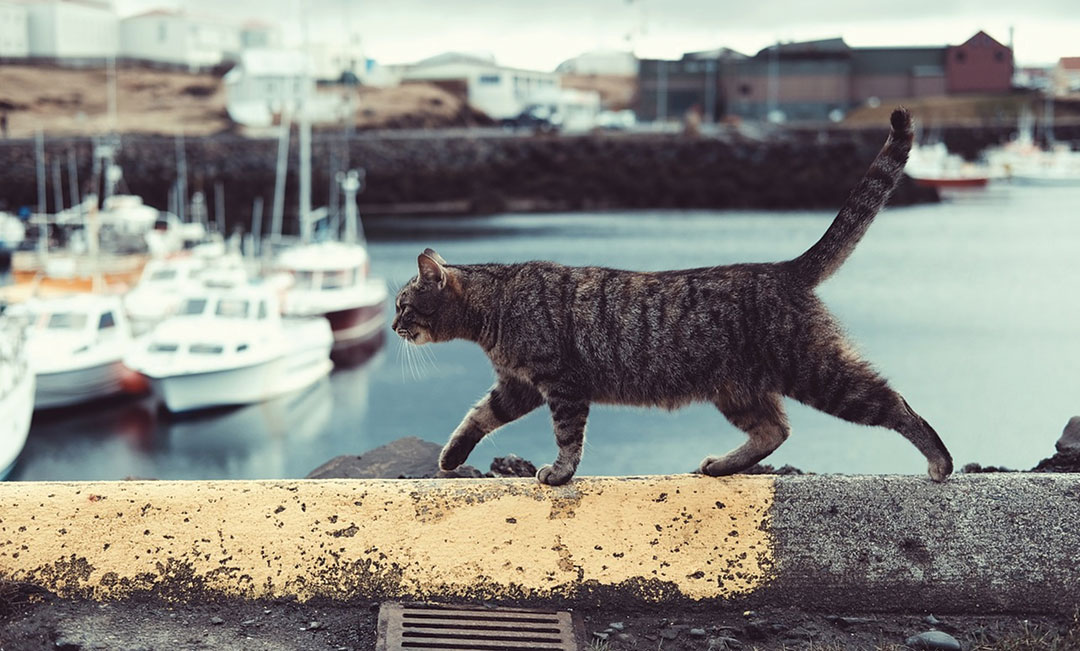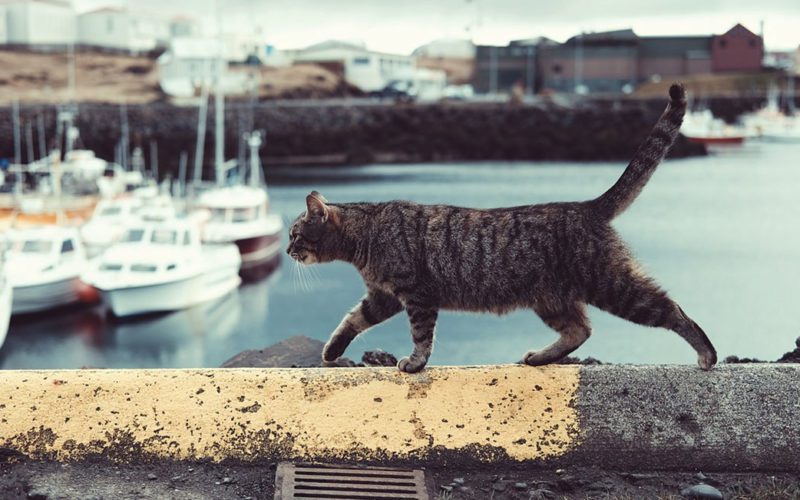
we reconsider.
I was hired as the extra mate during a voyage from the fishing grounds in Alaska down to Seattle. After a long day filled with flights and shuttles, I finally got on board late in the evening. After checking in with the captain, who I had sailed with before and knew well, I went down for a nap before assuming watch at midnight. I felt something on my feet just before nodding off. It had teeth, and felt like it was going to take a bite.
All kinds of unpleasant thoughts ran through my head. Was it a rat or mouse looking for a meal? Having encountered some very large rodents on ships before, that was a distinct possibility. I turned on the light and was relieved to see a tabby cat looking up at me. He was about a foot and a half long and solidly built. Eventually, he laid down next to me and we both fell asleep.
I told the chief mate about my experience the next morning at breakfast. “Oh, you met Tim, our ship’s cat,” he said, adding that Tim lived with him in Seattle during the off season. “We have him on board because the fish attract rats and mice.”
The mate read somewhere that cats kill some 20 billion rodents a year around the world, and said Tim definitely gets his share. Tim visited me often on our trip south, and once even presented me with a dead rat.
Cats killing vermin on a ship is good for more than just protecting its stores. Mice and rats will eat through woodwork and electrical wiring, increasing the risk of electrical fires. Felines are also known to predict weather, since their inner ears are very sensitive to changes in atmospheric pressure. When they itch, scratch, twitch or howl much more than normal, it can signal changing barometric pressure. Just by observing them, mariners can get a heads-up about an approaching storm.
Bringing cats along on maritime voyages dates back thousands of years. Hieroglyphics show Egyptian seafaring traders brought cats along on trips to the Mediterranean Sea. Their ability to control rodents on vessels is legendary, and since then it has been considered essential to have a feline on a ship at all times — whether at the dock or underway. One legendary American cat was Pooli, who sailed on USS Fremont, an attack transport during World War II. She was on board during the battles of the Marianas, the Palau Group, the Philippines and Iwo Jima. In 1944, she was decorated with seven U.S. stars and ribbons for her service under fire. The black cat Tiddles was born on a British ship and rode over 30,000 nautical miles of salt water aboard aircraft carriers during his seagoing career. He is considered the most well-traveled cat in the British Royal Navy. With all the benefits they offered, cats appeared to have a permanent place on board. Unfortunately, due to some oversights by mariners on cat-carrying vessels, that has changed.
In the 1800s, vessel crewmembers on British, American, Canadian, and New Zealand ships began letting their cats go ashore. The escaped felines attacked and killed local birds and other animals. That was bad enough, but some of the cats ended up staying after the ships departed. In short order, a few cats multiplied into many, with devastating results. Cats have contributed to the extinction of 63 species of birds, mammals and reptiles in places such as Macquarie Island and Australia in the South Pacific, Kerguelen Island in the South Indian Ocean, and other locations worldwide. These felines likely descended from cats working on ships.
The U.S. Coast Guard allowed cats on its vessels during World War I and II, but due to the disruptions they had caused in places where they were not native, felines ultimately became discouraged on board. Cats were no longer welcome on U.S.-flag commercial vessels following a ban enacted in the 1970s. Since then, tenting with chemicals and spraying with pesticides have been used to mitigate the vermin problem on ships. Unfortunately, in my experience on recently treated vessels, the rodents returned with the first load of cargo after the treatment.
There have been studies showing that petting or otherwise being around a feline can reduce stress in people. A Swiss study from a few years ago found just being around cats can reduce the risk of heart attacks. That, along with my observations about the ineffectiveness of chemicals and pesticides for keeping vermin off ships, suggest it’s time to revisit rules adopted by the U.S. and the International Maritime Organization banning felines from ships. Cats that are spayed or neutered, fully vaccinated and trained to use litter boxes should once again be welcomed as part of our ships’ crews.
Till next time, I wish you all smooth sailin.’ •
Capt. Kelly Sweeney holds the license of master (oceans, any gross tons) and has held a master of towing vessels (oceans) license as well. He has sailed on more than 40 commercial vessels and lives on an island near Seattle. He can be contacted at captsweeney@outlook.com.

